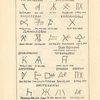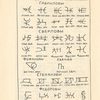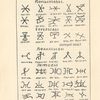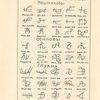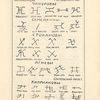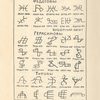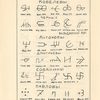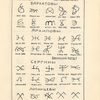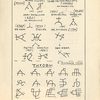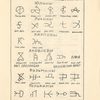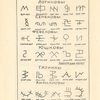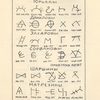The Lappish ancestral seals
The ownership rights were widely fixed using LAPPISH ANCESTRAL SEALS —tamgas (muhm), which were used to mark sailboats, oars, sleighs, booms and domestic utensils. It was also widely practiced to put a seal on the prey, which was temporarily left onsite. The most important use of seals was to mark the reindeers, which belonged to one or the other owner. These seals also replaced the signatory’s signatures for official documents. The seals (tamgas) were not only limited to Lappish men, but were also used by females. There were other seals of ownership, which were in circulation along with the ancestral seals: the “earmarks” or just “marks”, i.e. marks cut into the reindeer’s ears, showing the belonging of the reindeer to a certain person.
The existence of seals or tamgas is closely related to the phenomenon of property rights, inheritance and other family dealings. The main tradition of passage of seal was from the father to the youngest son. The elder sons used to make certain changes to the main seal for their personal use. The neighbours were always informed of the changes in the seal and someyimes even they needed the syyyt’s (chief’s) permission for the purpose. We also know of cases where the community sold its seals and “earmarks” (Yefimenko, 1877, page 30 Komshi-catch, 1927 page 46; Kharuzin 1890 page 251-252). The use of seals and “earmarks”, as well as the system of their inheritance shows that the seals served as familial as well as personal signs of richness among the Lapps.
